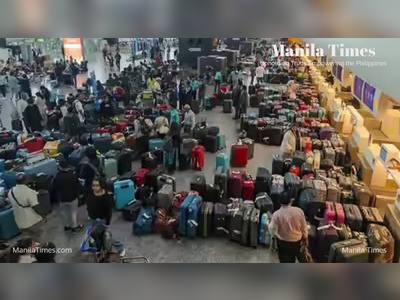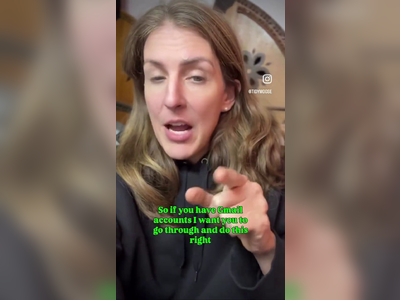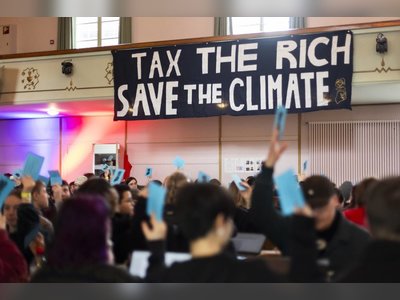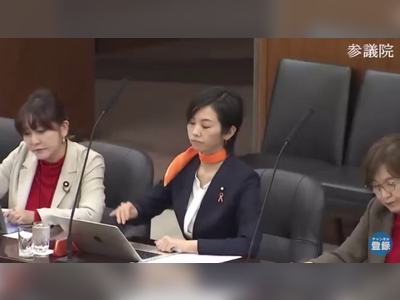Manila Times
Upholding Truth. Empowering the Philippines
Sunday, Dec 07, 2025
The Nation's Story is Told with Honor
Filipino Concern Over Online Disinformation Reaches Record High Amid Political Turmoil
The latest report shows a significant increase in public anxiety over misinformation as the Philippines navigates a politically charged landscape.
MANILA, Philippines — Concern regarding online misinformation and disinformation has surged to an all-time high of 67% in early 2025, coinciding with heightened political tensions during a midterm election cycle marked by significant events, including the impeachment of Vice President Sara Duterte on corruption charges and the arrest of former President Rodrigo Duterte by the International Criminal Court for crimes against humanity linked to his controversial drug war policies.
This figure represents the highest level of concern recorded since the Philippines was included in the Reuters Institute Digital News Report (DNR) in 2020. The report, which surveyed 97,055 respondents across 48 markets from mid-January to late February, including 2,014 adult Filipinos, was released on June 17.
The report indicated a noticeable trend in media consumption among Filipinos, with an increasing reliance on podcasts and AI chatbots for news, despite a prevailing caution towards fully automated journalism.
The findings also revealed a rise in verification habits, shifting preferences for news platforms, and evolving trust dynamics among audiences.
The reported four-point increase in concern from 63% in 2024 and a ten-point jump from 57% in 2020 positions the Philippines nine points above the global average of 58% and seven points above the Asia Pacific average of 60%.
This steady increase over six years points to a growing public apprehension surrounding the proliferation of false or misleading information online.
Particularly concerning was the demographic breakdown of these fears; higher levels of concern were observed among Filipino women (70%), individuals aged 55 and above (76%), and those aged 18 to 24 (70%).
Further, people with higher income (78%) and education (74%) levels, as well as residents of the Visayas region (73%), expressed increased anxiety about disinformation.
Among respondents, political figures were identified as the predominant sources of misinformation, with 55% of Filipinos attributing false content to political actors, compared to 48% who blamed online influencers.
This stands in contrast to the global sample, where both politicians and influencers were seen equally responsible (47% each).
The report also noted that 37% of Filipinos view journalists as a significant source of misinformation, exceeding the global average of 32%.
Social media emerged as the main platform for encountering disinformation, with Facebook identified by 68% of respondents, significantly higher than the global average of 49%.
Other platforms reported included TikTok (48%), YouTube (39%), X (formerly known as Twitter) (27%), and news websites (22%).
In contrast, both X and Instagram were generally viewed as more significant disinformation threats globally than YouTube, a trend not reflected in the Philippine data.
Concerns regarding content moderation also surfaced, with a third of Filipinos believing that moderation levels were adequate.
However, 27% felt that social media platforms should engage in more rigorous removal of misleading content, highlighting a desire for increased accountability from digital platforms.
In their efforts to verify information, Filipinos utilized various sources.
Contrasting with global trends where trusted news outlets were the primary choice, 40% of Filipinos referred to official government websites or agency channels, followed closely by 37% who relied on trusted news brands.
A notable 34% consulted fact-checking sites, a significant ascent compared to the global average of 25%, illustrating a heightened public awareness of the necessity of fact-checking.
Among the 27% who sought verification via social media, 45% preferred posts from official or government sources, 35% from influencers, and 34% from journalists, indicating the significant role of public figures in shaping narratives across social media platforms.
AI chatbots have also begun to gain traction for news verification, with 10% of respondents utilizing them for this purpose, especially among those under the age of 35. ChatGPT was identified as the most commonly used chatbot, with others mentioned being Meta AI and Google Gemini.
Training in news literacy appears to be on the rise in the Philippines, as reported by 36% of adult respondents, which is substantially above the global average of 22%.
Among those under 35, nearly half (47%) reported receiving education or training on how to consume news effectively.
Younger Filipinos exhibited a proclivity for multiple sourcing when verifying information, with 26% of 18- to 24-year-olds using three sources, and 12% utilizing four sources.
Despite the increasing use of AI in news, there remains a cautious approach toward fully automated journalism.
Only 21% of respondents expressed comfort with news primarily created by AI, while the preference for human-written but AI-assisted news stood at 35%.
Notably, AI personalization features were more welcomed, with 31% of Filipinos favoring AI-summarized news and 29% appreciating recommendations tailored to personal interests.
Podcasts have also solidified their presence, with 12% citing them as a news source, a figure comparable to the 13% for print media but trailing the 17% who relied on radio.
Podcast consumption was particularly favored among individuals aged 25 to 34.
Online news consumption has consistently outpaced traditional media, with 85% of Filipinos sourcing news from online platforms, including social media (66%).
Despite this, traditional media remains relevant, mirroring a growing demand for reliable information during politically charged times.
Only 25% of Filipinos reported visiting news websites or apps directly for their news, instead favoring social media (61%) and search engines (52%).
Preference for viewing news over reading has emerged among Filipinos, with 51% choosing to watch news content compared to 29% who prefer reading.
This trend has amplified the popularity of video-centric platforms such as YouTube and TikTok, placing the Philippines among leading markets for news consumption via these channels.
On social media, a greater proportion of Filipinos, compared to the global average, engaged with news outlets and journalists rather than personalities.
Specifically on Facebook, 66% of Filipinos focused on journalists, exceeding the global average of 44%.
The trend was similarly noticeable on X and YouTube, where preferences aligned with established news outlets over individual personalities.
Trust in news among Filipinos remained at 38%, closely mirroring the global average of 40%, although a decline in trust toward individual media brands was evident.
News avoidance was also reported by 48% of adults, indicating a desire to distance themselves from overwhelming political coverage and perceived negativity in the news cycle.
Respondents identified key factors for regaining trust in the media, including demands for accuracy, transparency, impartiality, and improved reporting practices.
Emphasis was placed on the necessity for verifiable facts and rigorous fact-checking to bolster trust in journalism.
This figure represents the highest level of concern recorded since the Philippines was included in the Reuters Institute Digital News Report (DNR) in 2020. The report, which surveyed 97,055 respondents across 48 markets from mid-January to late February, including 2,014 adult Filipinos, was released on June 17.
The report indicated a noticeable trend in media consumption among Filipinos, with an increasing reliance on podcasts and AI chatbots for news, despite a prevailing caution towards fully automated journalism.
The findings also revealed a rise in verification habits, shifting preferences for news platforms, and evolving trust dynamics among audiences.
The reported four-point increase in concern from 63% in 2024 and a ten-point jump from 57% in 2020 positions the Philippines nine points above the global average of 58% and seven points above the Asia Pacific average of 60%.
This steady increase over six years points to a growing public apprehension surrounding the proliferation of false or misleading information online.
Particularly concerning was the demographic breakdown of these fears; higher levels of concern were observed among Filipino women (70%), individuals aged 55 and above (76%), and those aged 18 to 24 (70%).
Further, people with higher income (78%) and education (74%) levels, as well as residents of the Visayas region (73%), expressed increased anxiety about disinformation.
Among respondents, political figures were identified as the predominant sources of misinformation, with 55% of Filipinos attributing false content to political actors, compared to 48% who blamed online influencers.
This stands in contrast to the global sample, where both politicians and influencers were seen equally responsible (47% each).
The report also noted that 37% of Filipinos view journalists as a significant source of misinformation, exceeding the global average of 32%.
Social media emerged as the main platform for encountering disinformation, with Facebook identified by 68% of respondents, significantly higher than the global average of 49%.
Other platforms reported included TikTok (48%), YouTube (39%), X (formerly known as Twitter) (27%), and news websites (22%).
In contrast, both X and Instagram were generally viewed as more significant disinformation threats globally than YouTube, a trend not reflected in the Philippine data.
Concerns regarding content moderation also surfaced, with a third of Filipinos believing that moderation levels were adequate.
However, 27% felt that social media platforms should engage in more rigorous removal of misleading content, highlighting a desire for increased accountability from digital platforms.
In their efforts to verify information, Filipinos utilized various sources.
Contrasting with global trends where trusted news outlets were the primary choice, 40% of Filipinos referred to official government websites or agency channels, followed closely by 37% who relied on trusted news brands.
A notable 34% consulted fact-checking sites, a significant ascent compared to the global average of 25%, illustrating a heightened public awareness of the necessity of fact-checking.
Among the 27% who sought verification via social media, 45% preferred posts from official or government sources, 35% from influencers, and 34% from journalists, indicating the significant role of public figures in shaping narratives across social media platforms.
AI chatbots have also begun to gain traction for news verification, with 10% of respondents utilizing them for this purpose, especially among those under the age of 35. ChatGPT was identified as the most commonly used chatbot, with others mentioned being Meta AI and Google Gemini.
Training in news literacy appears to be on the rise in the Philippines, as reported by 36% of adult respondents, which is substantially above the global average of 22%.
Among those under 35, nearly half (47%) reported receiving education or training on how to consume news effectively.
Younger Filipinos exhibited a proclivity for multiple sourcing when verifying information, with 26% of 18- to 24-year-olds using three sources, and 12% utilizing four sources.
Despite the increasing use of AI in news, there remains a cautious approach toward fully automated journalism.
Only 21% of respondents expressed comfort with news primarily created by AI, while the preference for human-written but AI-assisted news stood at 35%.
Notably, AI personalization features were more welcomed, with 31% of Filipinos favoring AI-summarized news and 29% appreciating recommendations tailored to personal interests.
Podcasts have also solidified their presence, with 12% citing them as a news source, a figure comparable to the 13% for print media but trailing the 17% who relied on radio.
Podcast consumption was particularly favored among individuals aged 25 to 34.
Online news consumption has consistently outpaced traditional media, with 85% of Filipinos sourcing news from online platforms, including social media (66%).
Despite this, traditional media remains relevant, mirroring a growing demand for reliable information during politically charged times.
Only 25% of Filipinos reported visiting news websites or apps directly for their news, instead favoring social media (61%) and search engines (52%).
Preference for viewing news over reading has emerged among Filipinos, with 51% choosing to watch news content compared to 29% who prefer reading.
This trend has amplified the popularity of video-centric platforms such as YouTube and TikTok, placing the Philippines among leading markets for news consumption via these channels.
On social media, a greater proportion of Filipinos, compared to the global average, engaged with news outlets and journalists rather than personalities.
Specifically on Facebook, 66% of Filipinos focused on journalists, exceeding the global average of 44%.
The trend was similarly noticeable on X and YouTube, where preferences aligned with established news outlets over individual personalities.
Trust in news among Filipinos remained at 38%, closely mirroring the global average of 40%, although a decline in trust toward individual media brands was evident.
News avoidance was also reported by 48% of adults, indicating a desire to distance themselves from overwhelming political coverage and perceived negativity in the news cycle.
Respondents identified key factors for regaining trust in the media, including demands for accuracy, transparency, impartiality, and improved reporting practices.
Emphasis was placed on the necessity for verifiable facts and rigorous fact-checking to bolster trust in journalism.
AI Disclaimer: An advanced artificial intelligence (AI) system generated the content of this page on its own. This innovative technology conducts extensive research from a variety of reliable sources, performs rigorous fact-checking and verification, cleans up and balances biased or manipulated content, and presents a minimal factual summary that is just enough yet essential for you to function as an informed and educated citizen. Please keep in mind, however, that this system is an evolving technology, and as a result, the article may contain accidental inaccuracies or errors. We urge you to help us improve our site by reporting any inaccuracies you find using the "Contact Us" link at the bottom of this page. Your helpful feedback helps us improve our system and deliver more precise content. When you find an article of interest here, please look for the full and extensive coverage of this topic in traditional news sources, as they are written by professional journalists that we try to support, not replace. We appreciate your understanding and assistance.









